India’s massive capital, the seventh most populous city in the world with over 16 million inhabitants, welcomes us in a hard, complex, exhausting and sometimes painful way. This is Delhi.
It’s a visit that is practically unavoidable, and a place that you have to learn to love. This infinite city offers a lot to the traveler, and, in addition to monuments and history, it is like a huge treasure hunt with many obstacles.
With more than 5 centuries of history, we have Old Delhi, where we are greeted by the Red Fort and historic buildings. New Delhi is currently home to most government offices, as it has been the country’s capital since 1931.
To begin with, it must be said that any time is a good time to visit Delhi, although it is true that there are better and not so good times throughout the year.
We know that the subject of visas can be somewhat confusing, especially for India, where obtaining one is an essential requirement for entry. In the article on how to obtain an Indian visa step by step (coming soon) you have information on how to apply for one online for up to 5 years.
It’s essential to travel to India with comprehensive insurance. We were among the first to offer the popular IATI discount, and you can now get it with Heymondo Travel Insurance as well.
You can find more information about both companies through the links provided above, or you can access the discount directly using the buttons below (in both cases, you’ll see the reduced final price on their website):
While many hotels, guesthouses, and restaurants in India offer free Wi-Fi, some travelers prefer or need a constant connection. We’ve included details on obtaining a eSIM India card with unlimited data (from Holafly) or with fixed data but cheaper (from Saily).
If you want to get it directly, here’s the link (with a discount) for both companies:
The modern Indira Gandhi International Airport is one of the largest airports in the world, with a large number of domestic and international connections and the most popular gateway for those traveling to India.
We have some tips for finding cheap flights to India so you can take advantage of the savings you make to spend in the country or on other travel expenses.
When you arrive at the airport, take a look at how to get from Delhi airport to Paharganj for less than one euro. (coming soon)
If you are already in the country, you should know that Delhi has four train stations to which numerous trains arrive, as well as connections with almost any city in India: Delhi Junction, New Delhi Central Station, Hazrat Nizamuddin and Anand Vihar.
To travel from other cities you can buy a train ticket in one of the sleeper classes (3rd class). Beware of some of the scams when you want to buy a train ticket: there are usually quite a few. Get well informed..
Numerous operators serve Delhi from many cities in India. The country’s more mountainous areas are mostly accessible by bus.
Also known as Lal Qila (in Hindi), the Red Fort of Delhi is one of the main tourist attractions in India, and was declared a World Heritage Site in 2017. As we approach, the reddish color of the sandstone with which it was built in the mid-17th century clears up all doubts about its name.
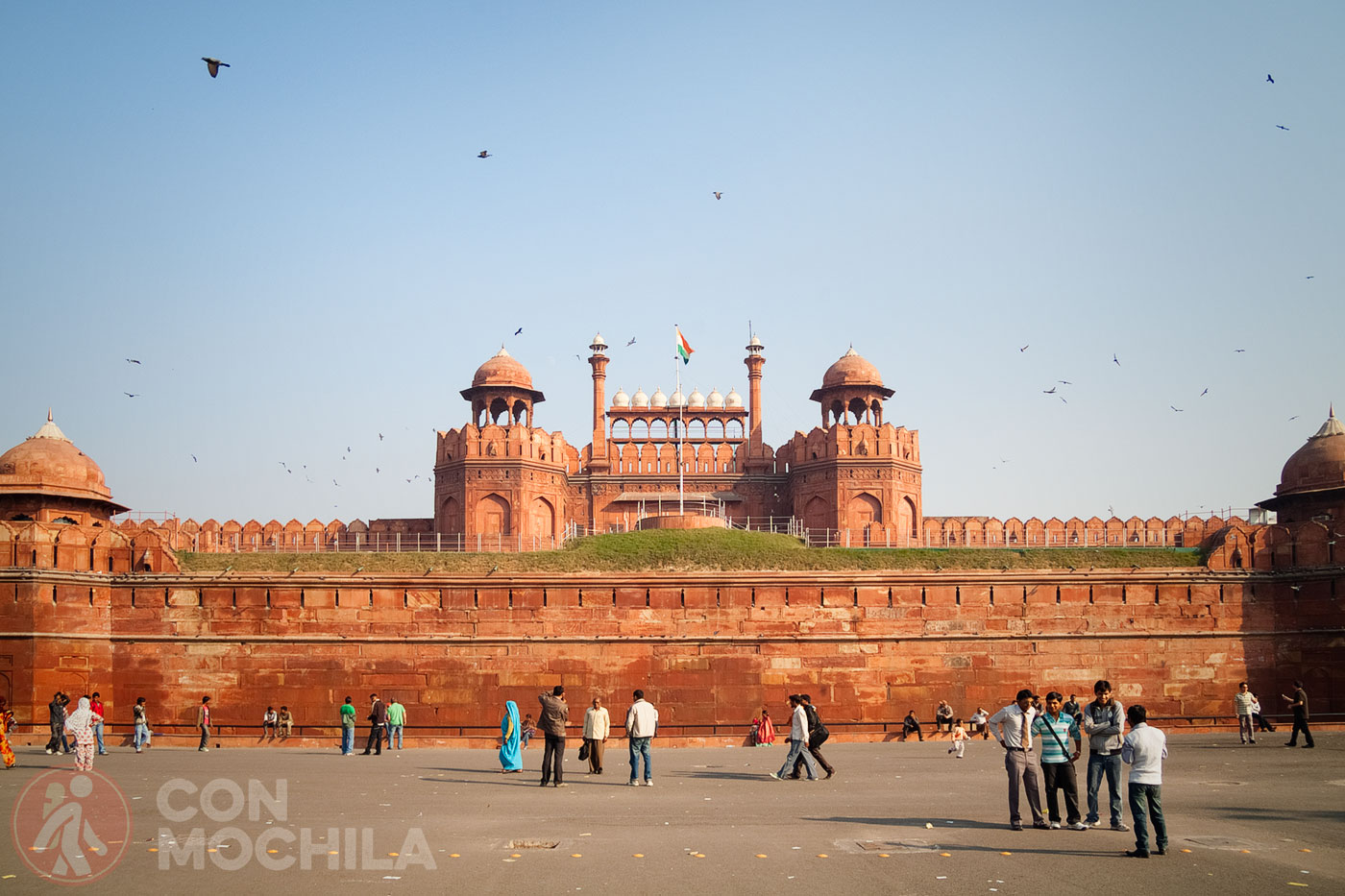
Entering through one of its two doors, we will discover a bazaar, Chatta Chowk, several pavilions, and the imperial enclosure.
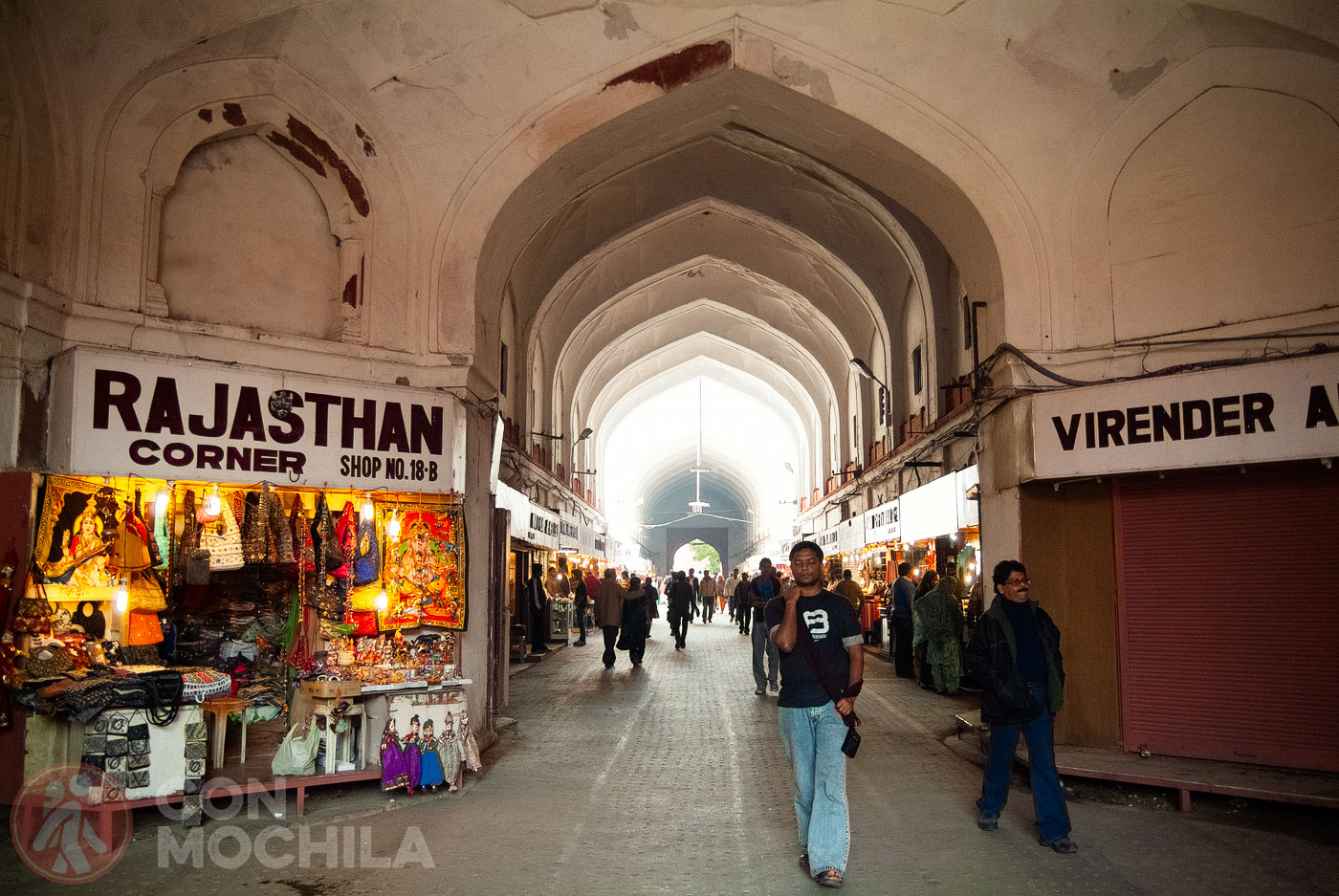
A World Heritage Site since 1993, the Qutub complex is a complex of buildings built by Qutub-ud-din Aibak, sultan of the Mamluk dynasty in the 14th century. The buildings include mosques, minarets and tombs, among others.
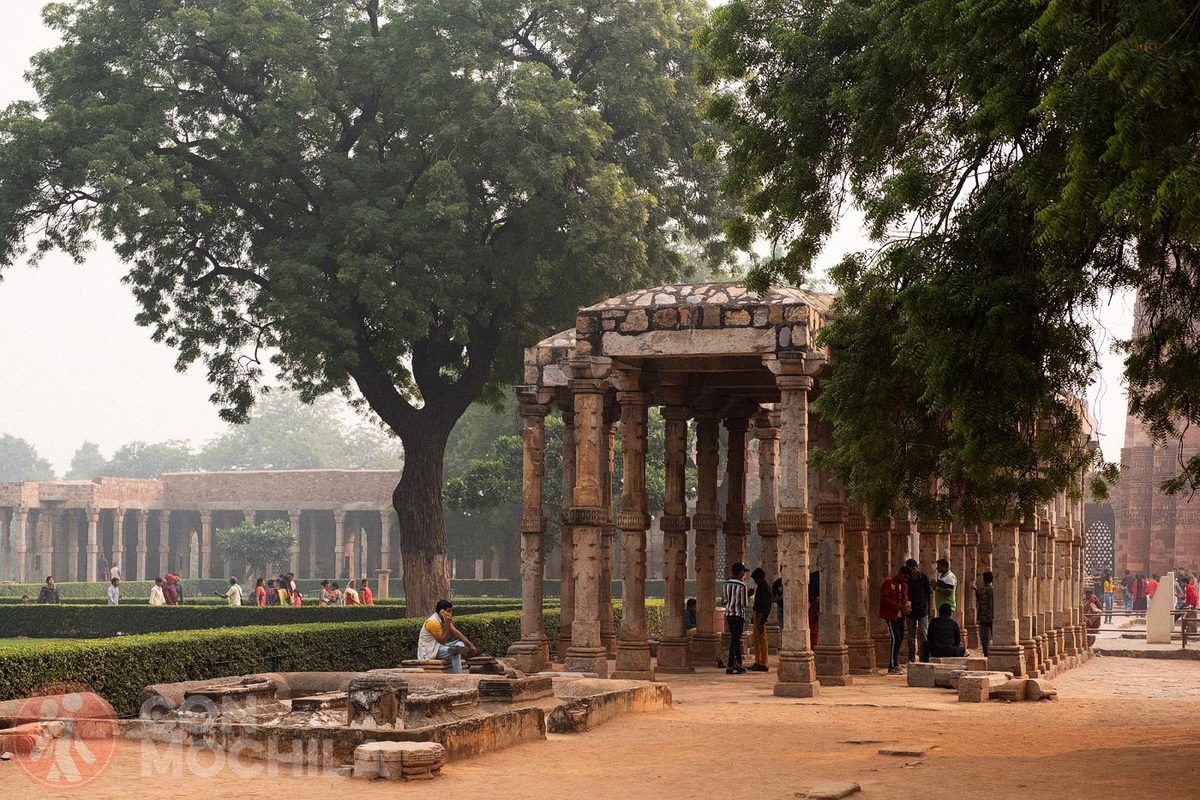
The most famous is the Qutub Minar, said to be one of the tallest minarets in the world, built of marble stone and brick. Without a doubt, it is one of the most interesting places in Delhi.
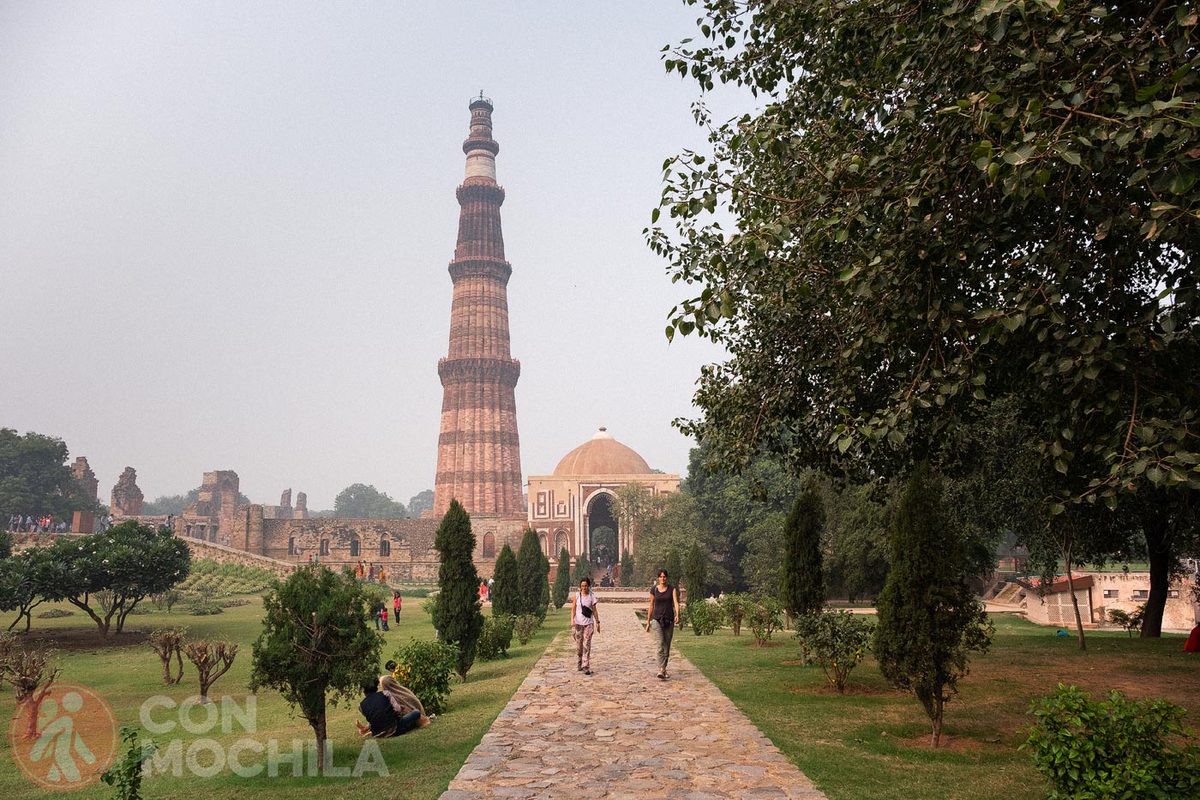
If there is a building that has nothing to envy the Taj Mahal, it is Humayun’s Tomb, a World Heritage Site since 1993, and the last refuge of the emperor of the same name.
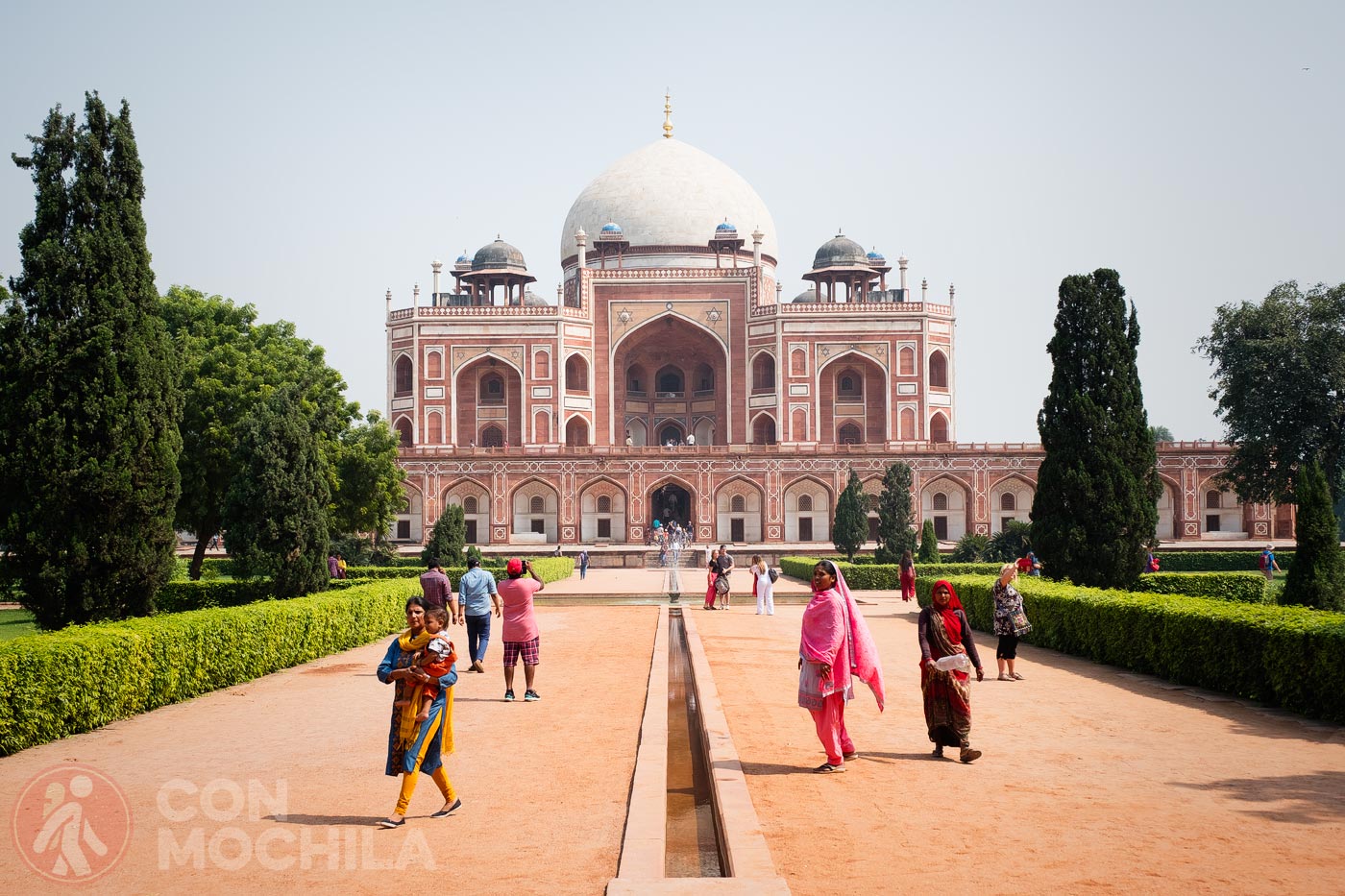
The complex, built in the 15th century and made of red sandstone and marble details, is more reminiscent of a palace of Persian origin than a tomb. There are other buildings and tombs in the complex. The mausoleum is located on a platform with the ruler’s cenotaph in the center.
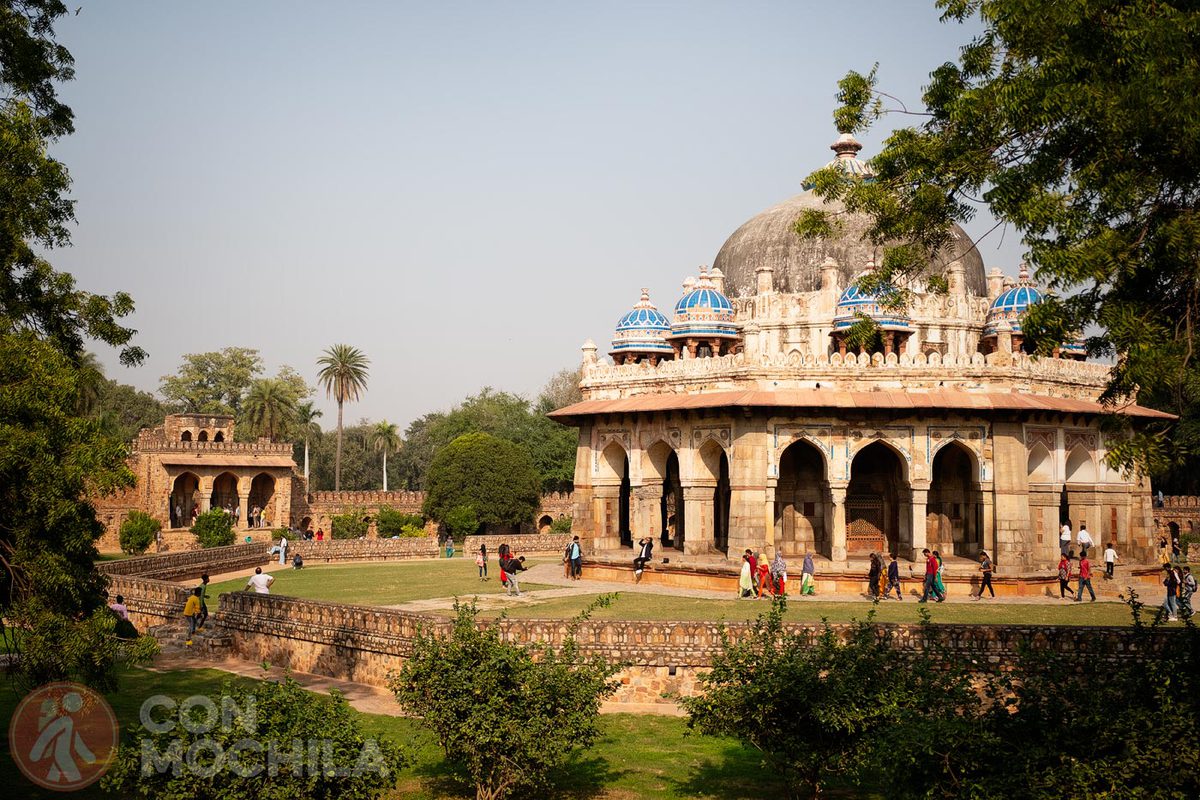
In the center of Delhi, we find one of the largest mosques in India, Jama Masjid. This temple was built by the Mughal emperor Shah Jahan in the 17th century after moving the capital of the empire from Agra to Delhi.
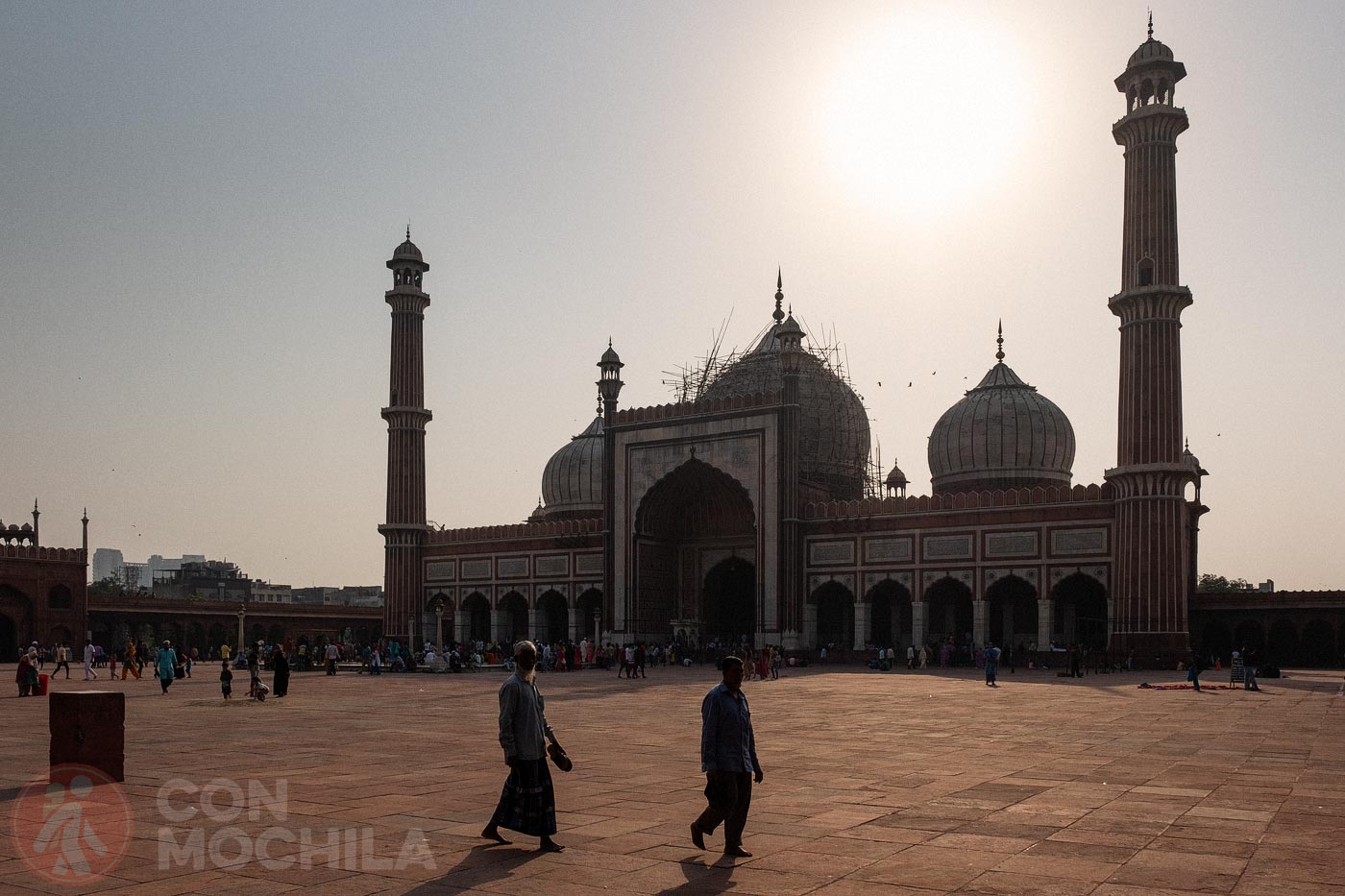
It is said that more than 5,000 people worked for 6 years to complete it. The imposing mosque of red stone and white marble stands on a platform and has three entrances with majestic domes, 4 towers and 2 minarets about 40 meters high.
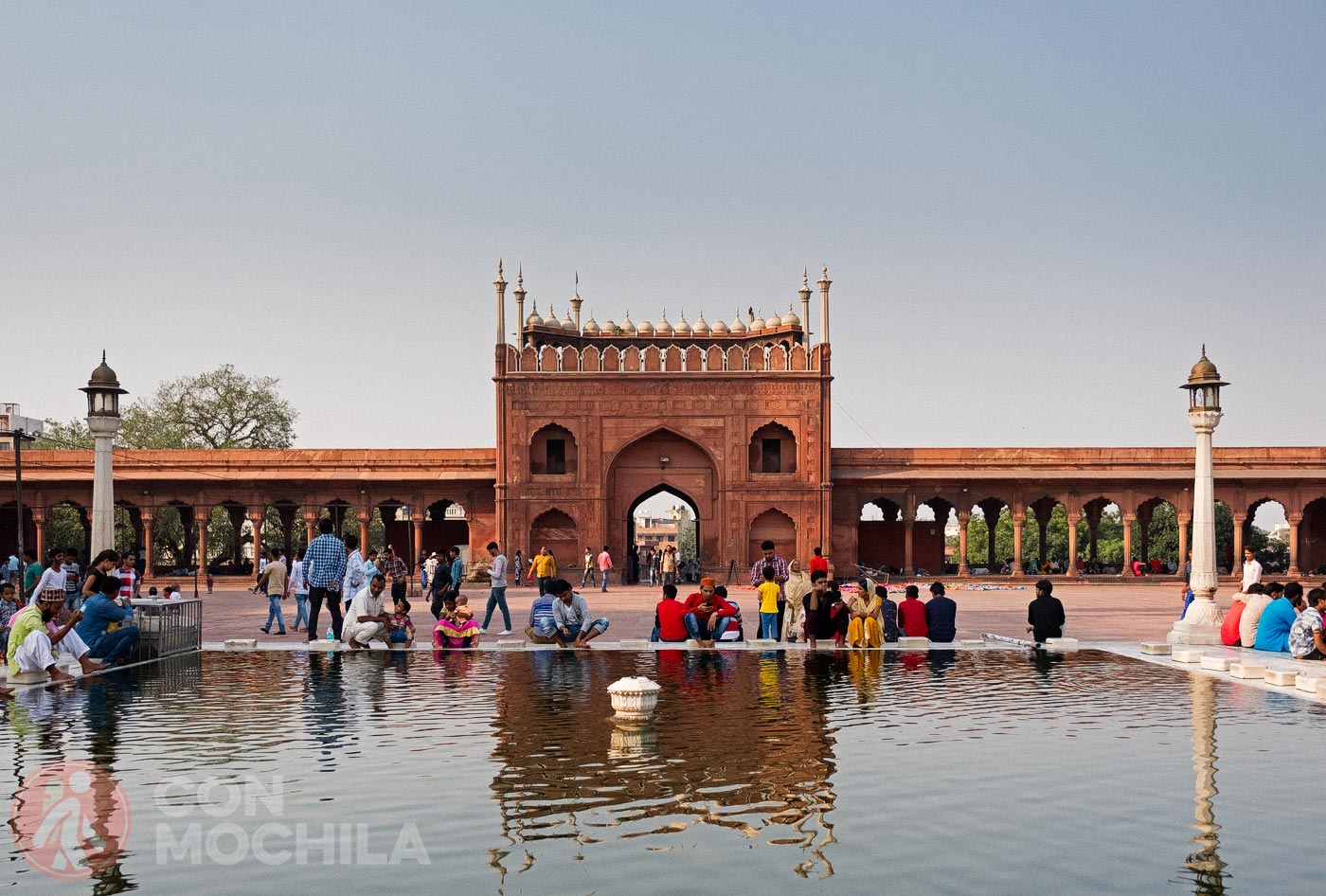
Cheap hotels, small restaurants, shabby shops of all kinds, merchants, street stalls, rickshaws, cows, backpackers, Indians, the smell of incense, the taste of chai… we have arrived in Paharganj, the backpacker epicenter in Delhi, one of the most authentic neighborhoods in India.
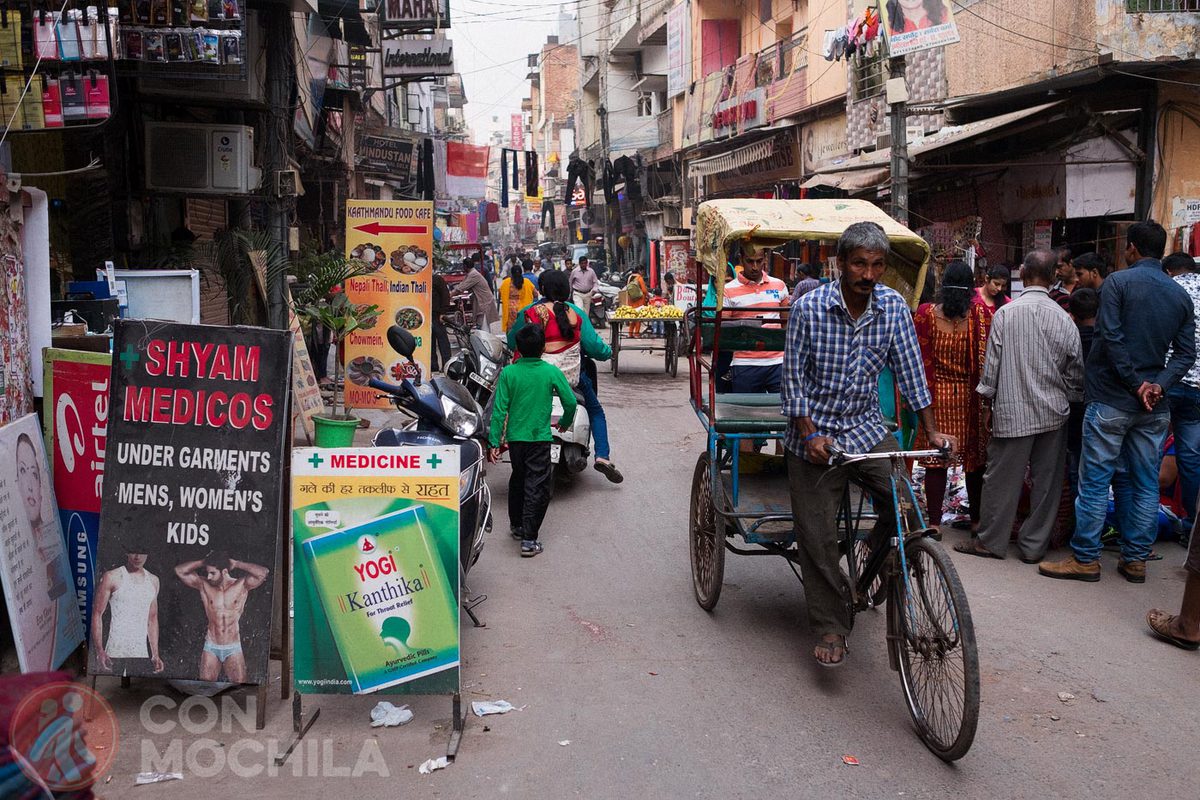
Located in the vicinity of the New Delhi train station, Main Bazar Street is the entrance to this chaotic but incredible neighborhood where you can find everything.
Getting to the back streets of Old Delhi is a challenge in itself, from the negotiations with rickshaw drivers and the hustle and bustle of pedestrians, to the crazy traffic between cars, rickshaws, buses, motorbikes, etc.
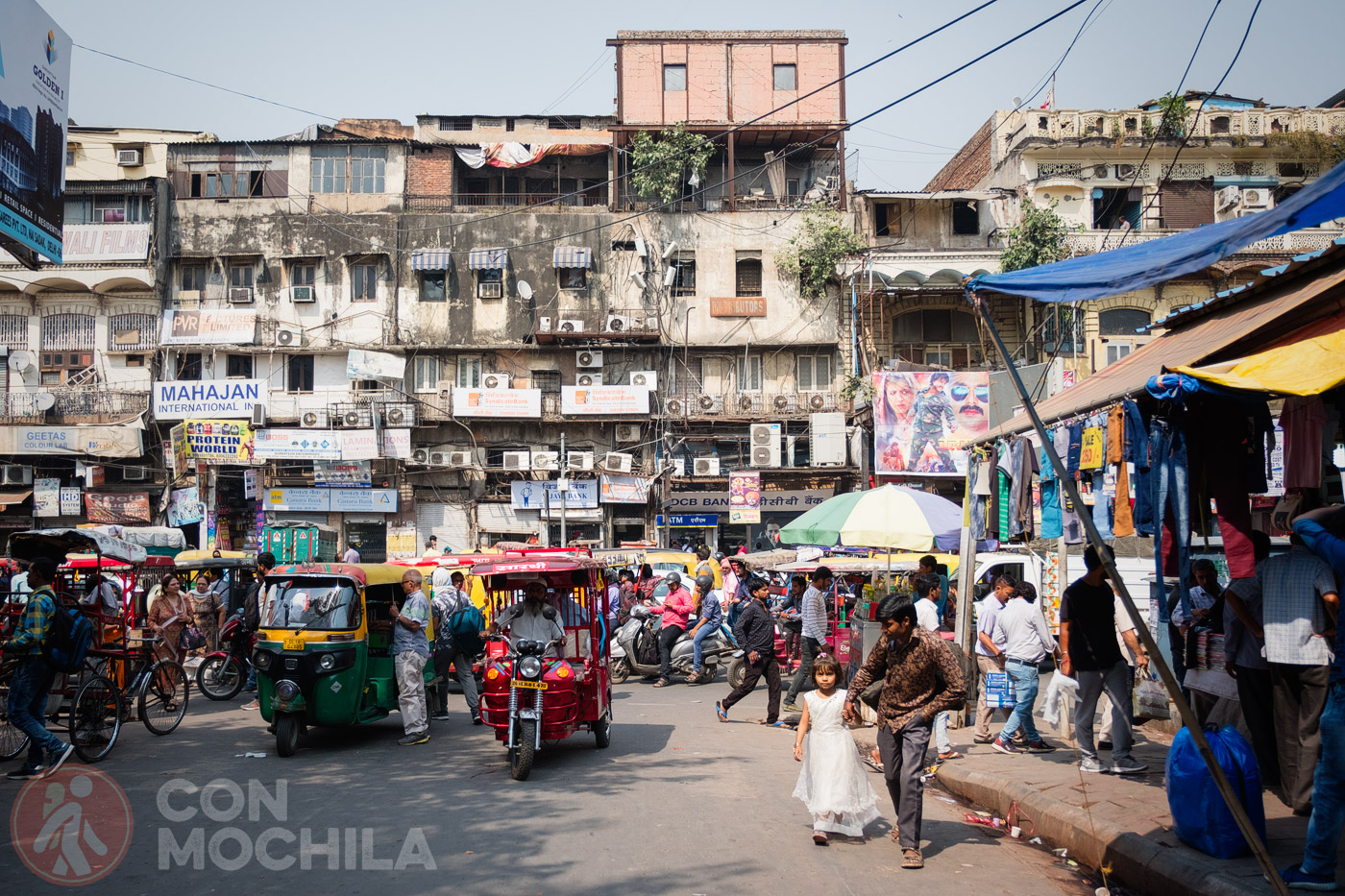
In Old Delhi, you will find small covered alleys and passageways where street stalls for “locals” abound. If you fancy a bite to eat, use common sense, observe how the food is prepared and the popularity of the stall to avoid major stomach upsets.
Built between 1921 and 1931, this war memorial is located on Rajpath at the confluence of several avenues and is a reminder of the 70,000 Indian soldiers who died during World War I and the Afghan Wars, with over 13,300 names inscribed on its walls.
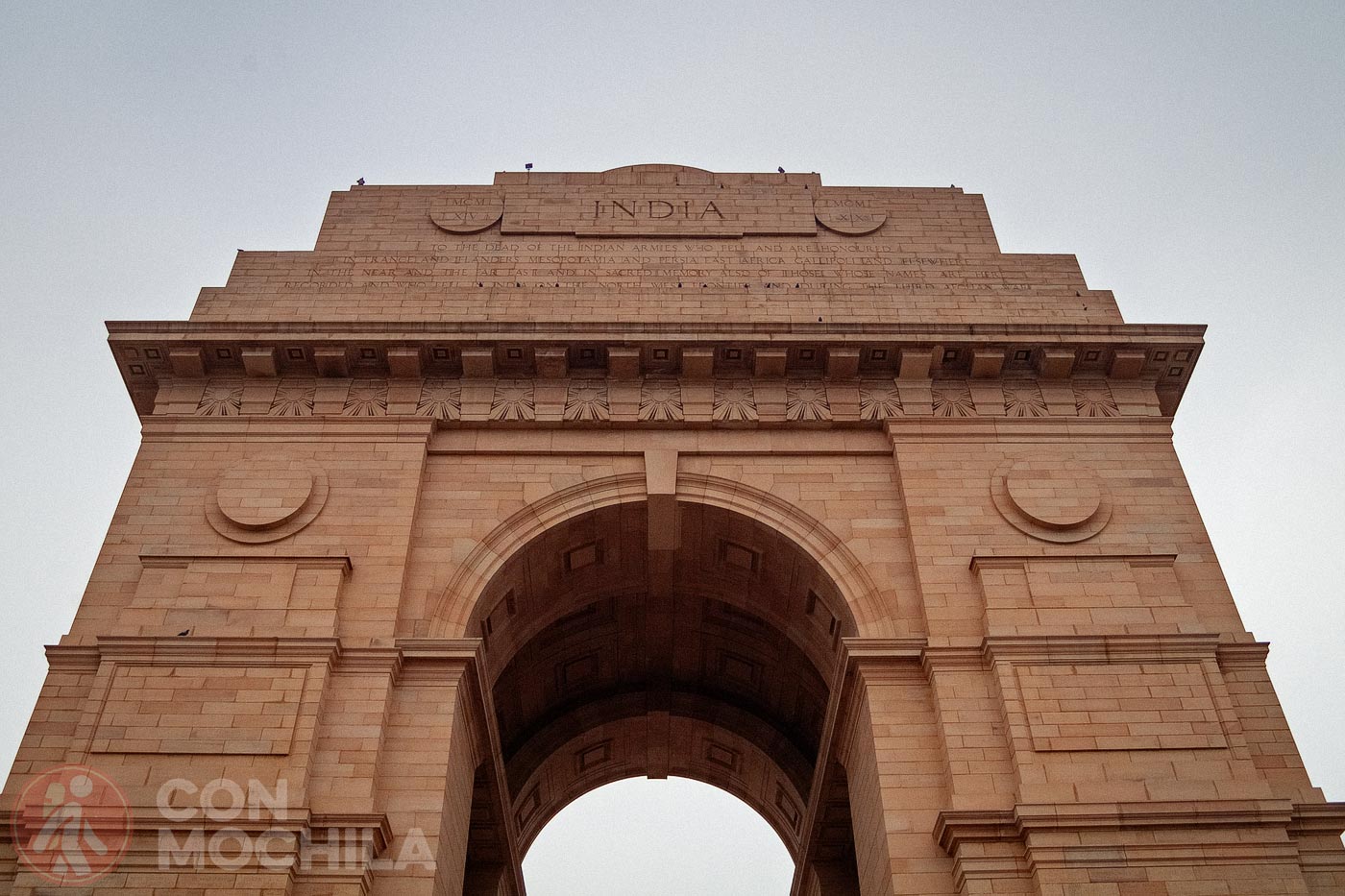
India Gate, 42 meters high, is reminiscent of the French triumphal arch, and was designed in colonial style by Edwin Lutyens, one of New Delhi’s greatest architects and an expert in war memorials.
The Indira Gandhi Memorial Museum is the former residence of the former prime minister, with an exhibition commemorating her tenure. This gallery, now her home, recounts the story of the woman who was murdered by her bodyguards.
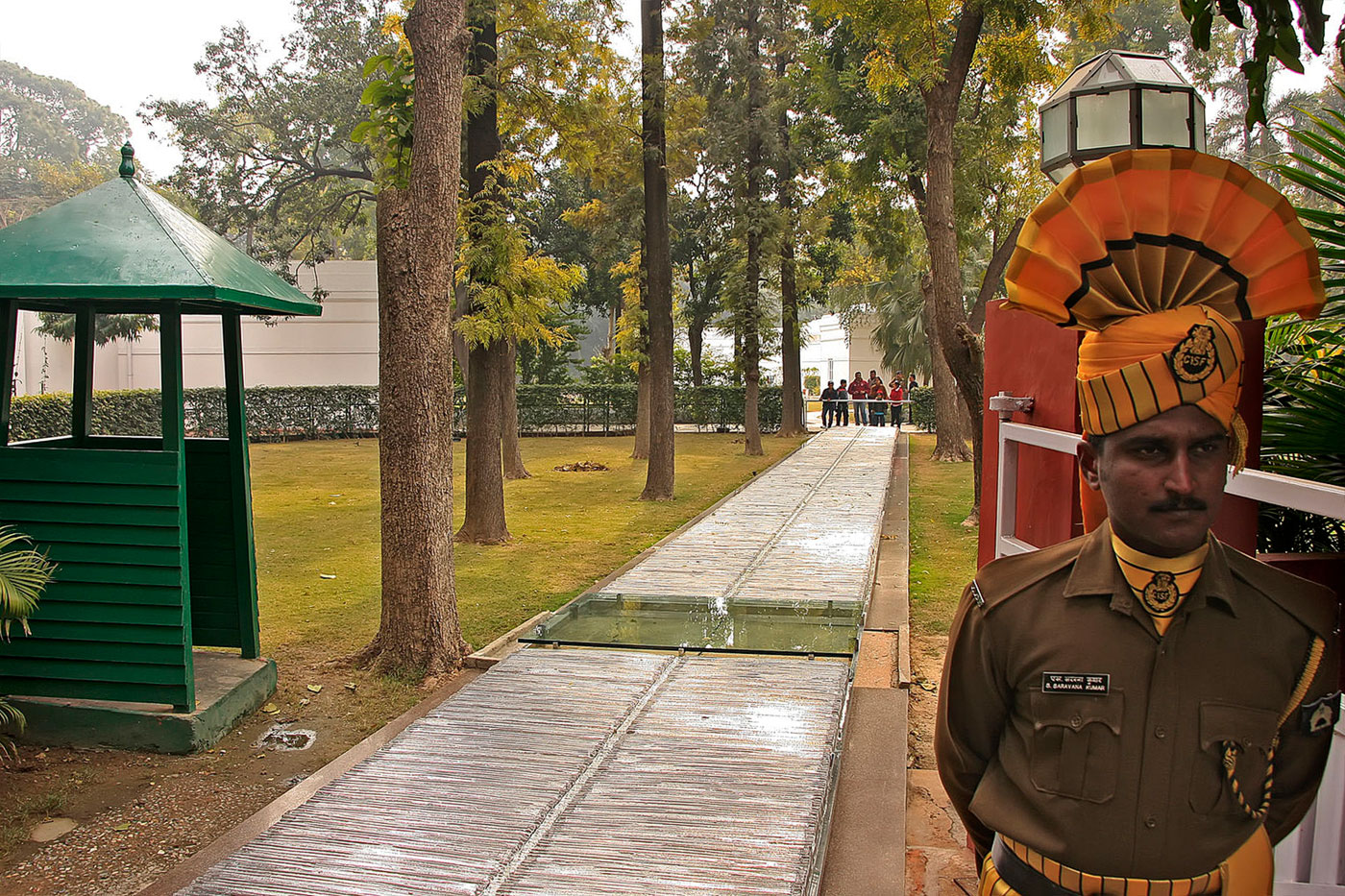
Javier Moro’s Red Sari, which appears on the list of Recommended Books for a Trip to India (coming soon) that you should read, is a good read to learn more about the Gandhi family.
The “divine abode of God” is the translation of Akshardham, an imposing temple that will leave us speechless as we approach it. Surrounded by a body of water, the Akshardham temple is a spiritual center where the premise is that every soul is potentially divine.
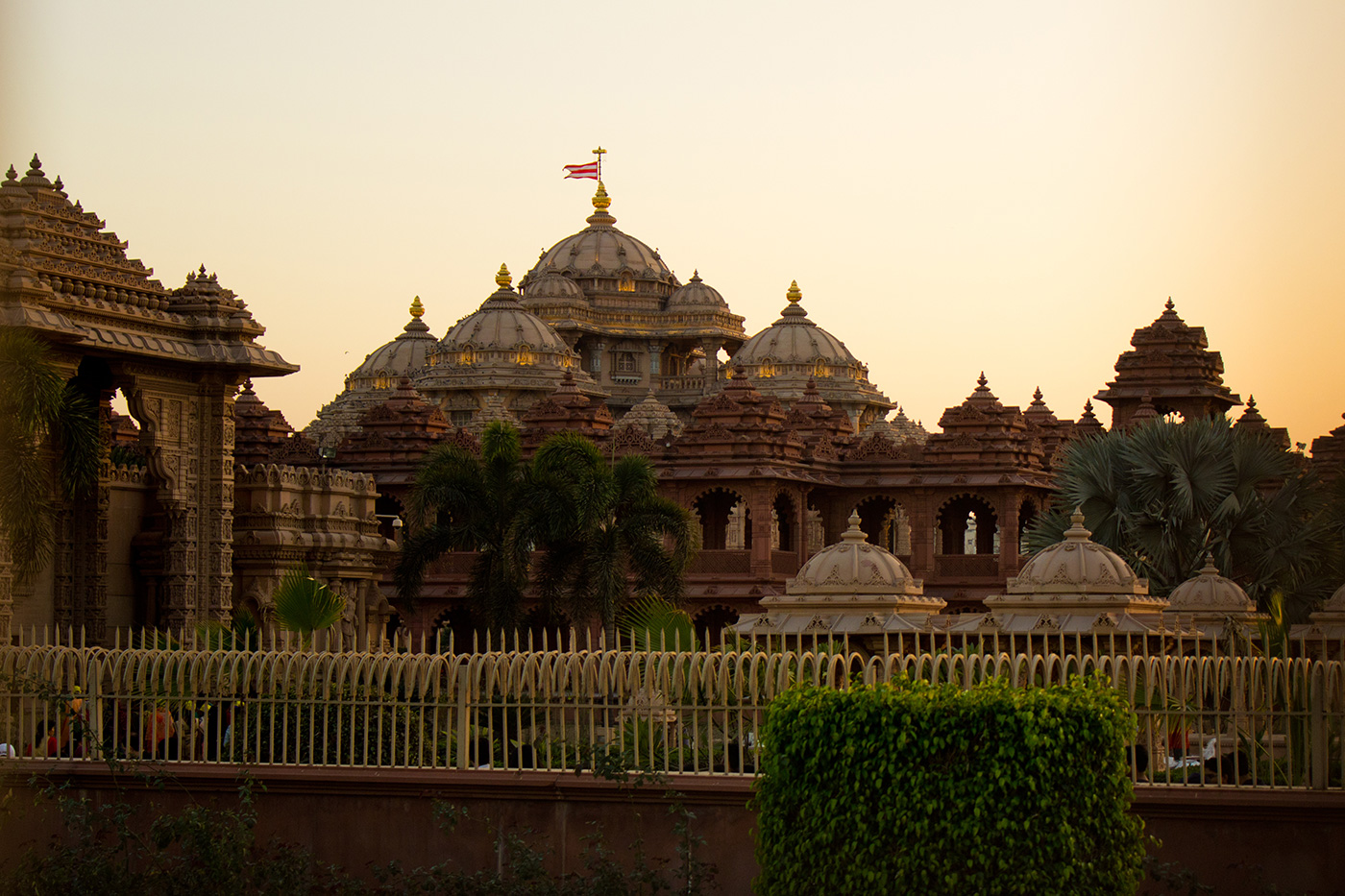
It promotes that each of our actions brings us a little closer to God. Its architectural style is a combination of traditional Indian styles and, as strange as it may seem, it is less than 15 years old.
During the 18th century, Maharaja Sawaii Jai Singh II built 5 astronomical observatories in India. Known as Jantar Mantar, those are buildings of diverse and curious shapes, each with a specific function.
The observatory in New Delhi contains 13 astronomical instruments built in 1724 and its main purpose was to compile astronomical tables and predict the movements of the sun, moon and planets.
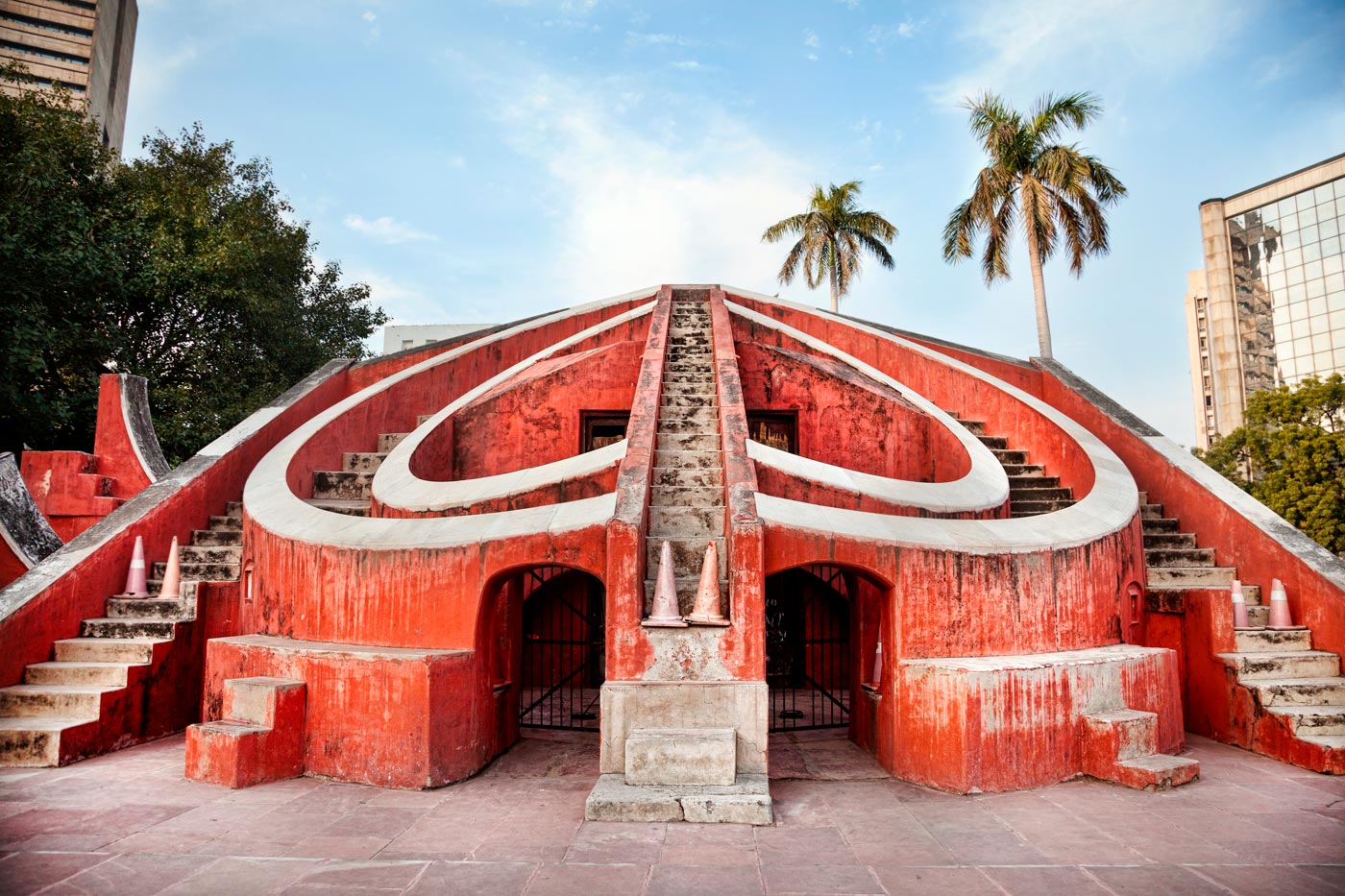
As the financial center of Delhi, Connaught Place is home to numerous businesses, buildings and shops of all kinds, as well as restaurants frequented by locals and tourists alike.
It was designed in a circular shape by British architect Robert Tor Russell between 1929 and 1933.
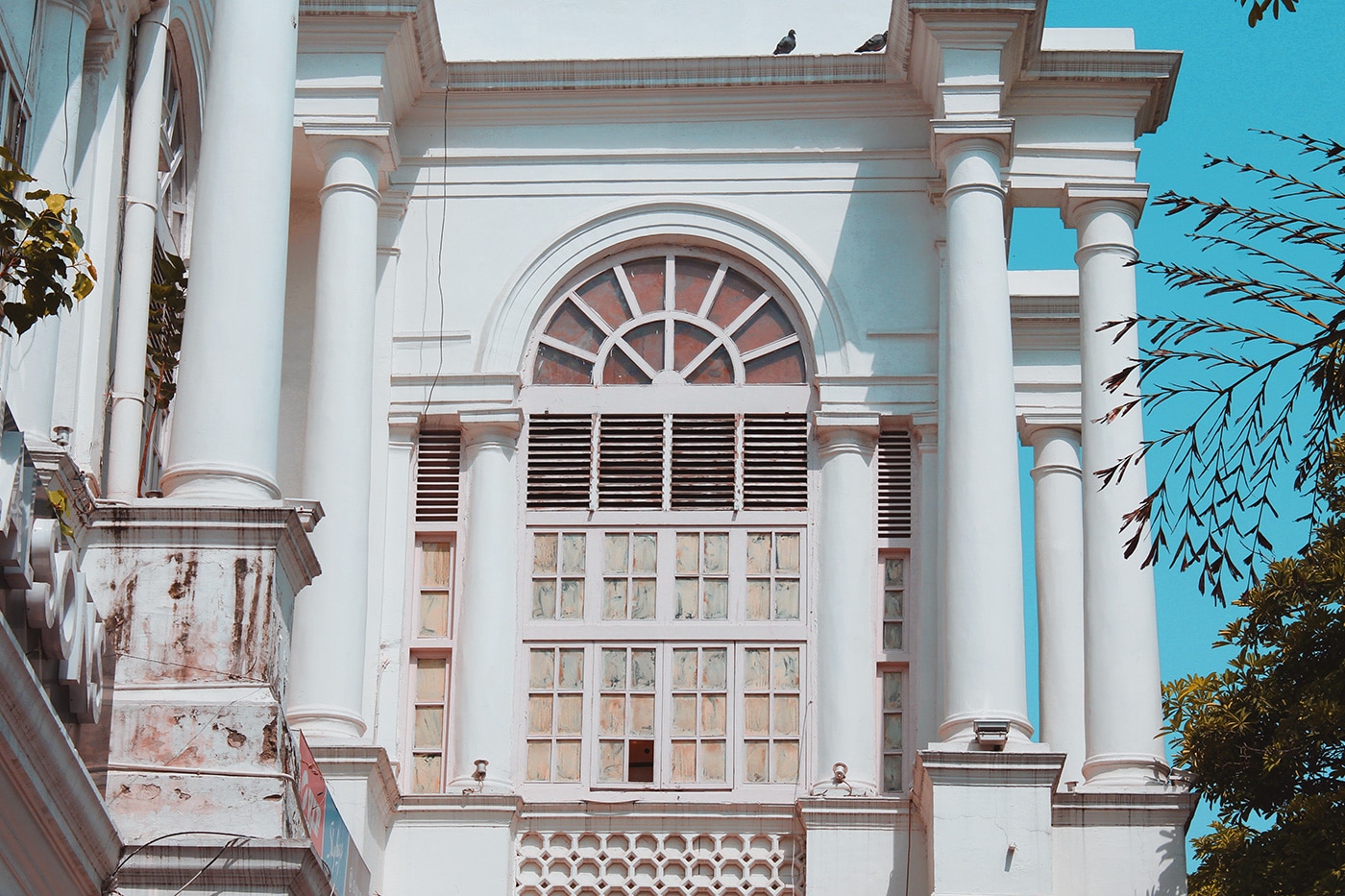
Inside, where no less than 8 streets meet, we find Central Park, which allows us to relax a little among the locals and, if we are lucky, we can attend one of the numerous events and concerts held here.
We know that Delhi can be one of the most stressful cities in the world. To escape from this chaos, what better than to take a walk through some gardens that become an oasis within the city?
Lodhi Gardens is the perfect place to have a picnic and walk among some ruins and tombs from the time of the Mughal Empire or even go for a run.
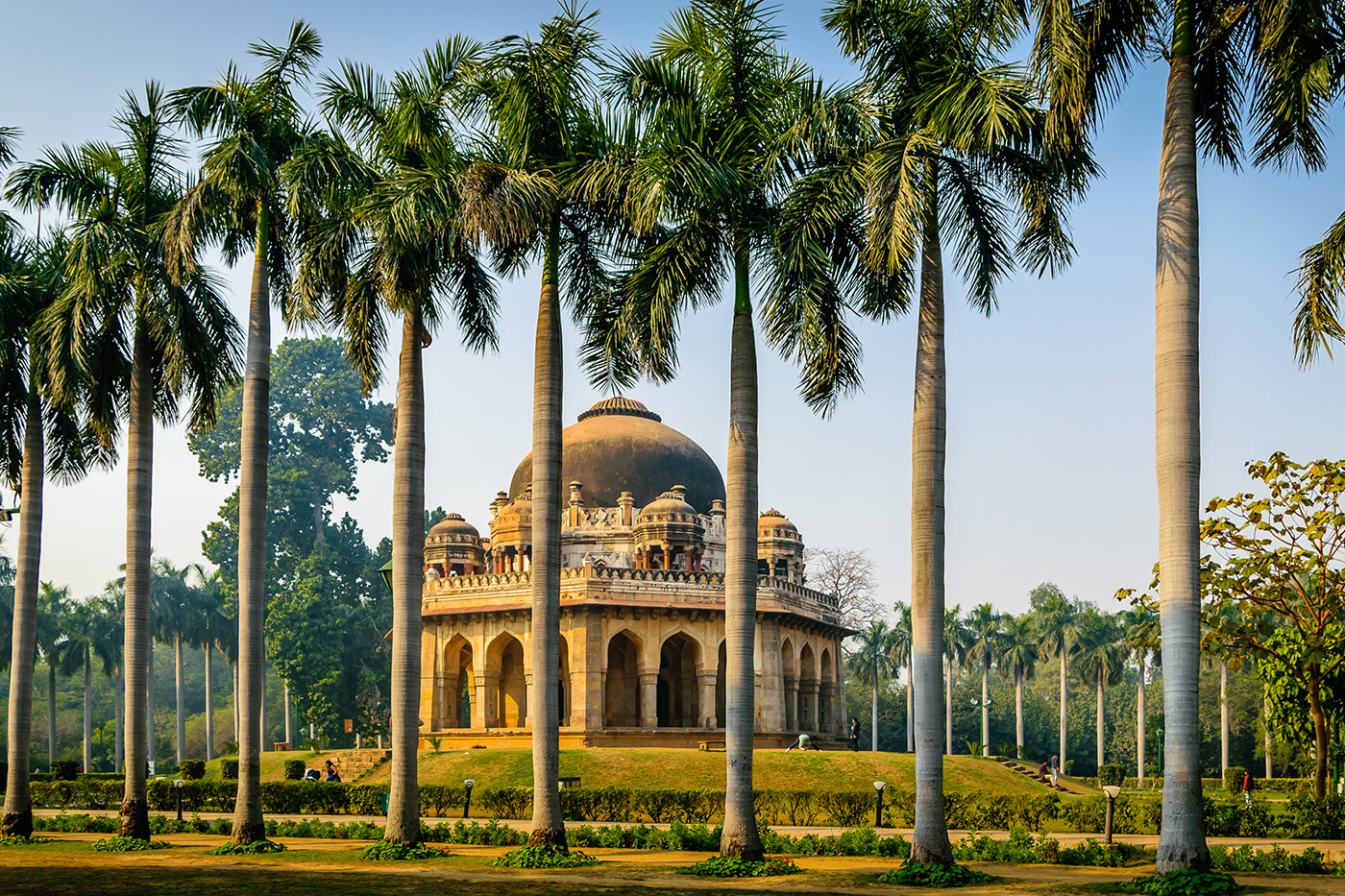
In addition, we can also visit Nehru Park, near Chanakyapuri, built in the 70s and quite well maintained, which has become another of Delhi’s much-needed lungs.
Rajpath Boulevard is one of the most important avenues in India, and the site of the annual Republic Day parade. The boulevard runs from Rashtrapati Bhavan (the President’s residence) to the National Stadium, passing under India Gate and Vijay Chowk.
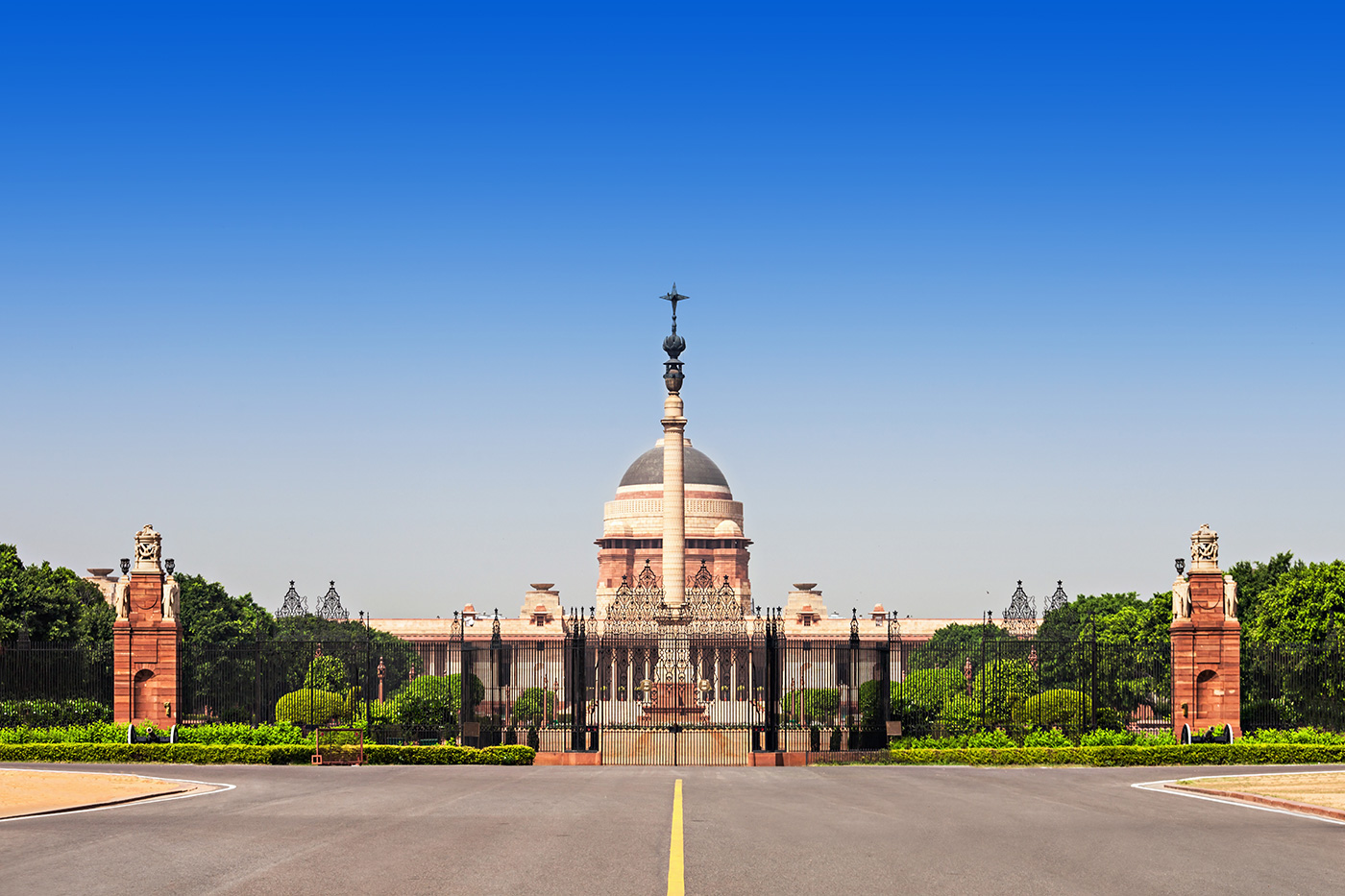
King Rajpath ordered the British architect Edwin Lutyens to build this street and it was initially named “Kingsway” (in honor of the London street of the same name). It is one of the (not too many) places in Delhi where you can take a leisurely stroll.
Gandhi Smriti is a museum dedicated to Mahatma Gandhi, and is the place where he spent the last months of his life until he was assassinated in 1948.
The mansion, owned by the Birla family and now by the Indian government, was reopened in 1973 as a tribute to Gandhi’s life.
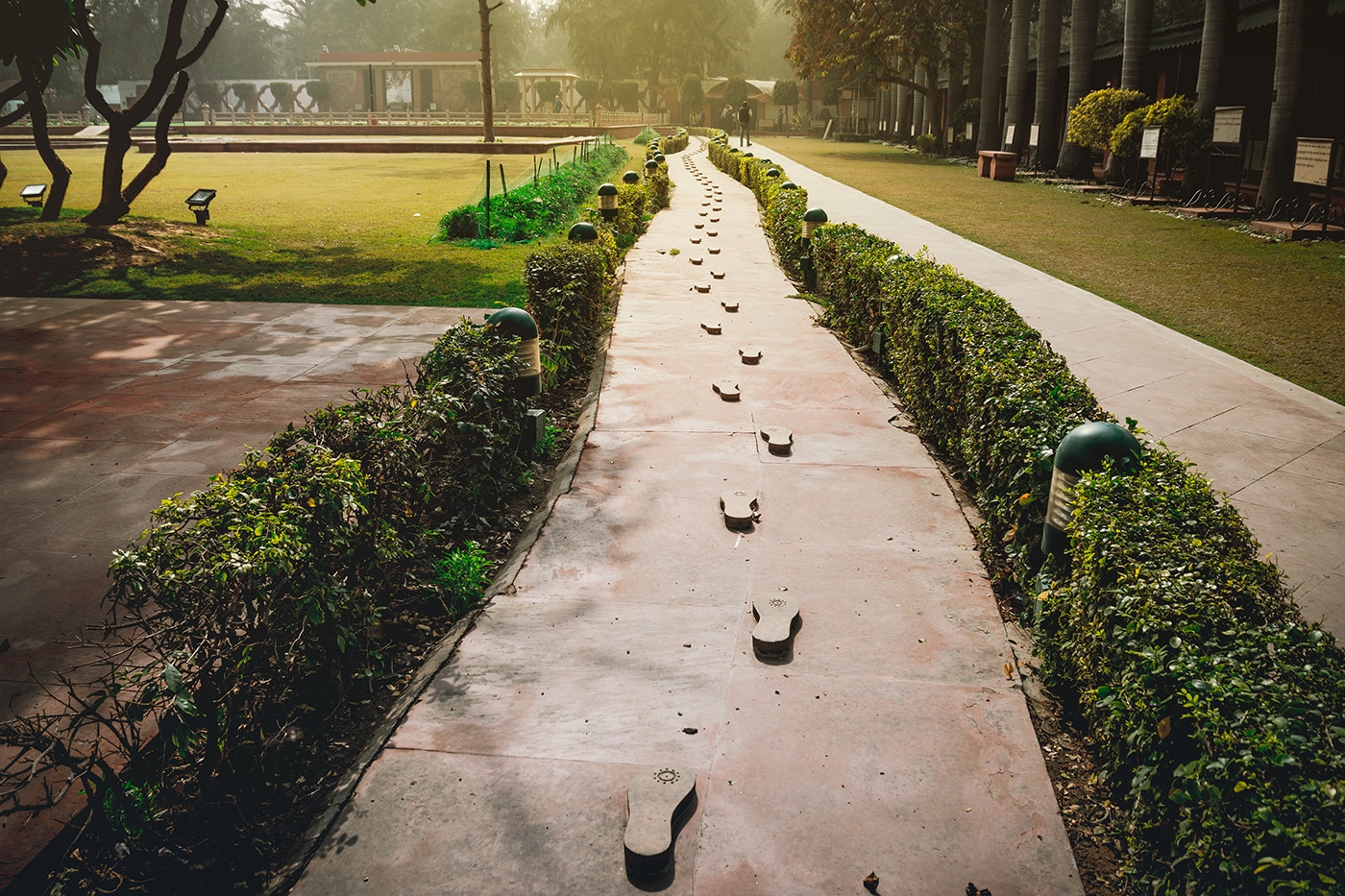
The building has been preserved in the same way as it was in that era, with many objects and you can walk through the gardens where the Indian leader would go out at dusk. A column indicates the place where he was shot while praying.
Gurudwara Bangla Sahib is a Sikh temple located very close to Connaught Place in New Delhi. It is easily recognizable by its golden dome and white marble and by being next to the Sacred Heart Cathedral.
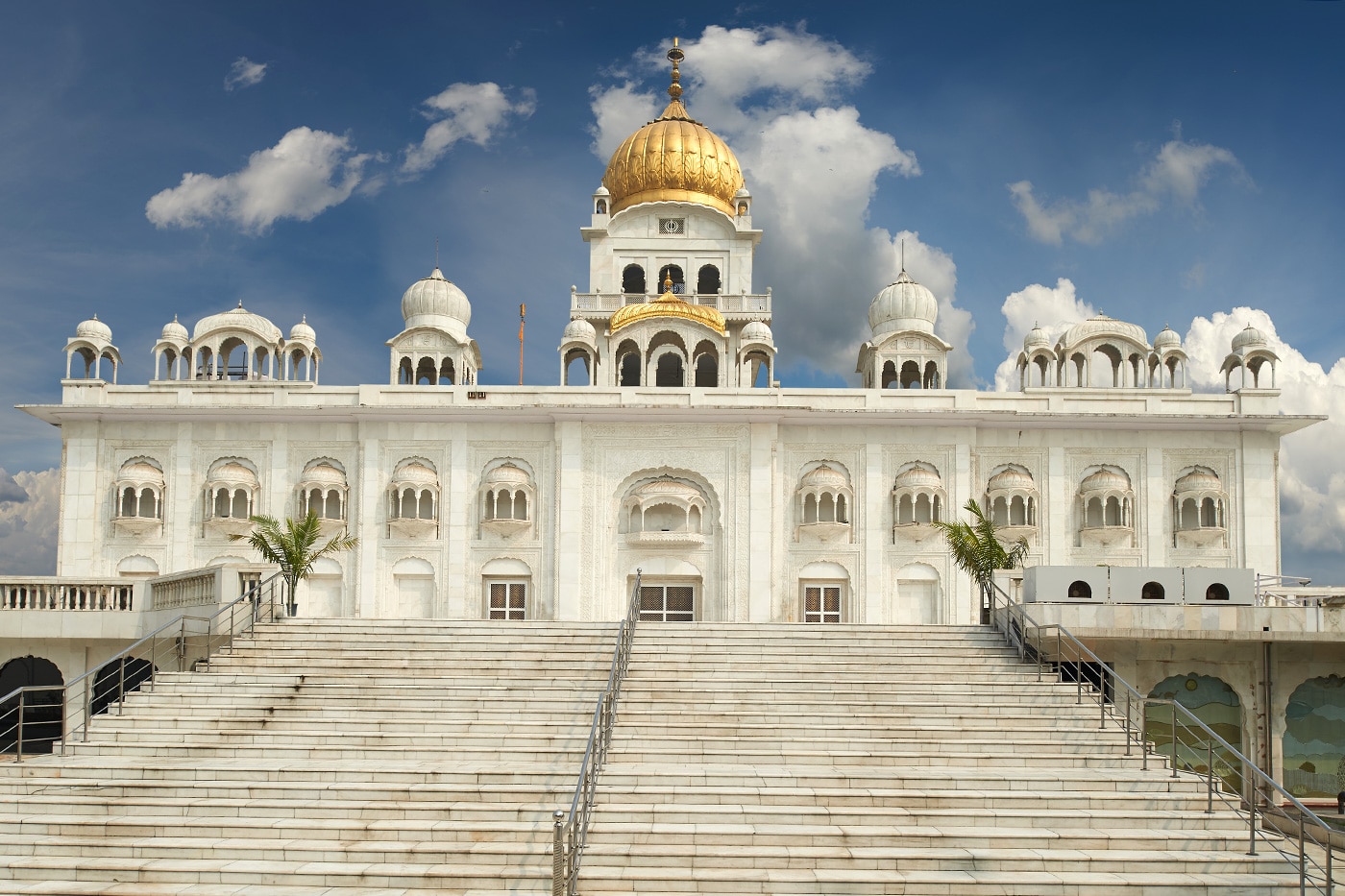
Initially a residence belonging to Raja Jai Singh in the 17th century, it became the home of the eighth Sikh guru, who during his stay helped save the lives of hundreds of people thanks to the water from a spring during a cholera and measles epidemic. After that, it became a sacred place for the Sikhs.
The ruins of the Tughlaqabad Fort, built in 1321 and abandoned a few years later, give us a glimpse of the grandeur with which Ghiyas-ud-din Tughlaq of the Tughlaq dynasty wished to endow the Delhi Sultanate. Much of the citadel is inaccessible, as it is overgrown with vegetation.
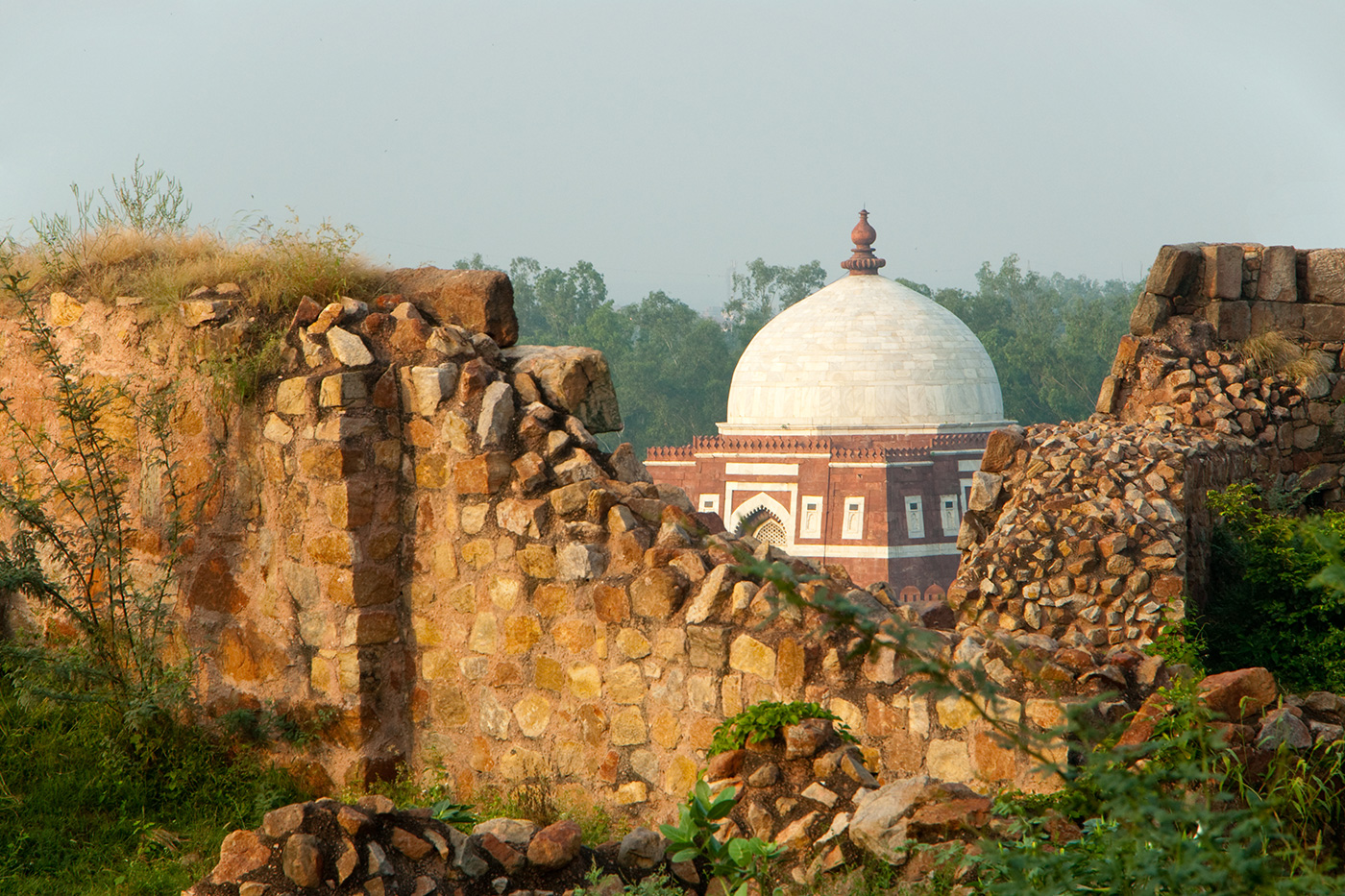
South of the fort, we find the ruler’s mausoleum, with a dome made of red stone and marble, and three tombs inside. Some macaques will accompany you during the visit, especially if you take some food, so be careful.
Purana Qila, next to Qutub Fort, is one of the oldest forts in Delhi, having been built in the 16th century along the Yamuna River by the Mughal King Shah Suri. Its foundations are said to date back to before the 12th century and it has since seen and “suffered” Delhi’s many political and historical changes.
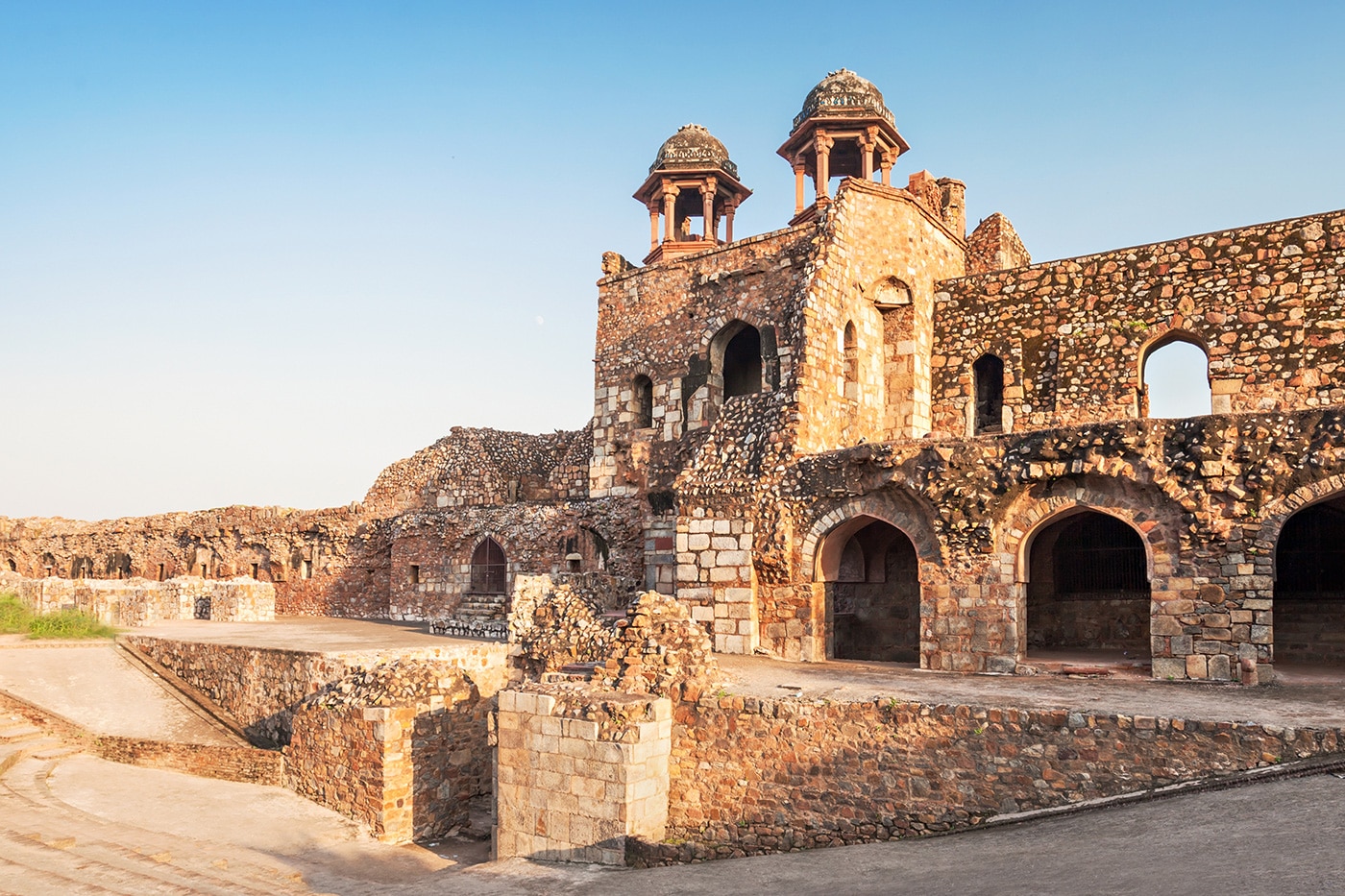
During the construction of Rajpath Boulevard, the English architect Edwin Luytens had the fort placed right in the center of the boulevard. Walking around the fort is quite relaxing thanks to its gardens and ruins.
This Hindu temple dedicated to the goddess Yogmaya, sister of Krishna, is located in Mehrauli, one of the 7 cities built by the Pandavas in the 12th century that formed the present-day Delhi.
The Yogmaya temple dates back to the 19th century, but has been rebuilt several times on the foundations of temples dating back to the 3rd century BC.
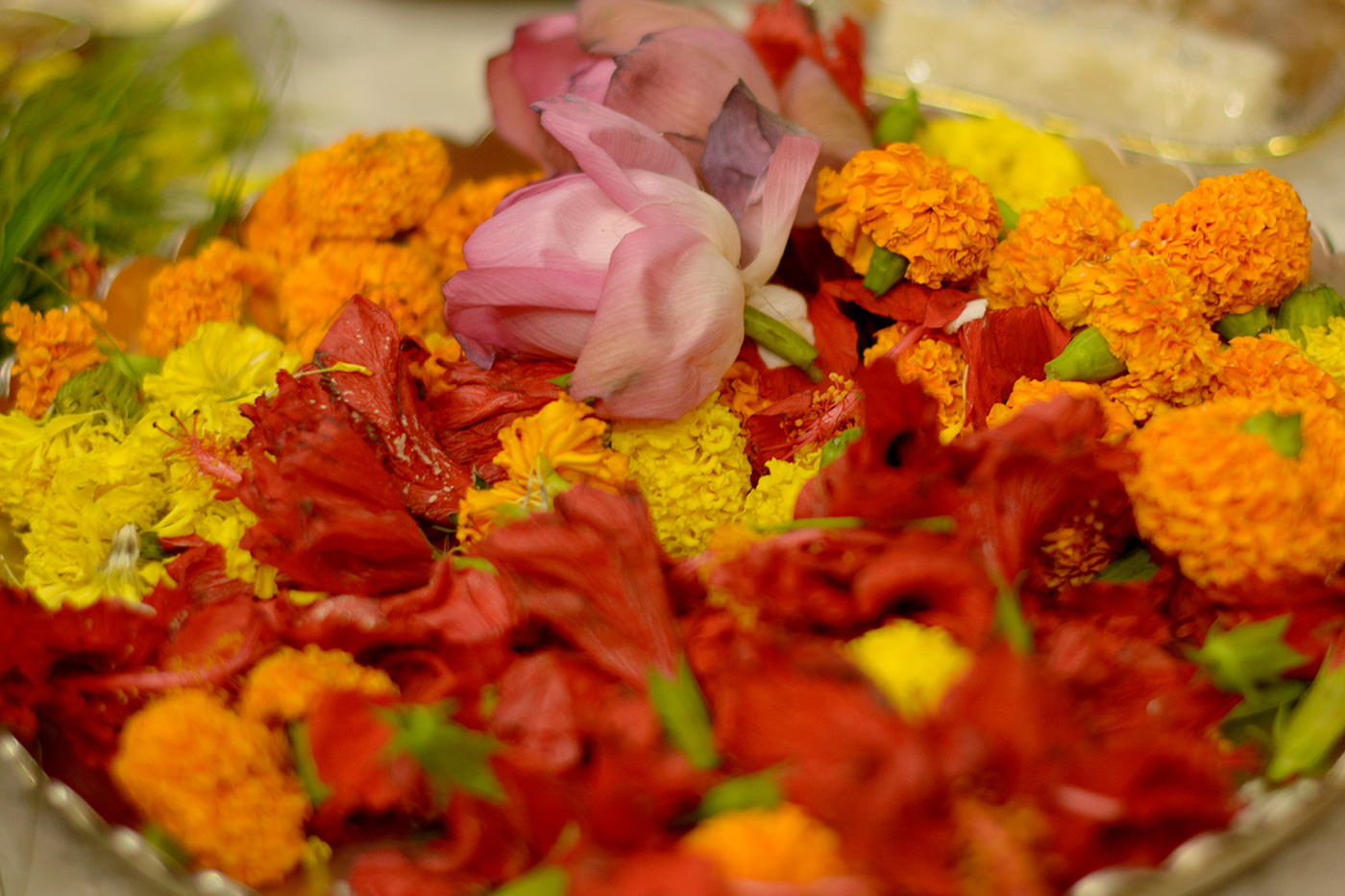
After passing a wall that guards the temple, we find an entrance to a room where there is an image of the goddess in black stone, where you can also visit the white dome that can be seen from outside the building.
For Baha’i followers, the Lotus Temple is the largest representative of their religion on the Indian subcontinent. Built in 1986, the religion dictates that its houses of worship (there are only seven or eight temples in the world) must have nine sides and be circular in shape.
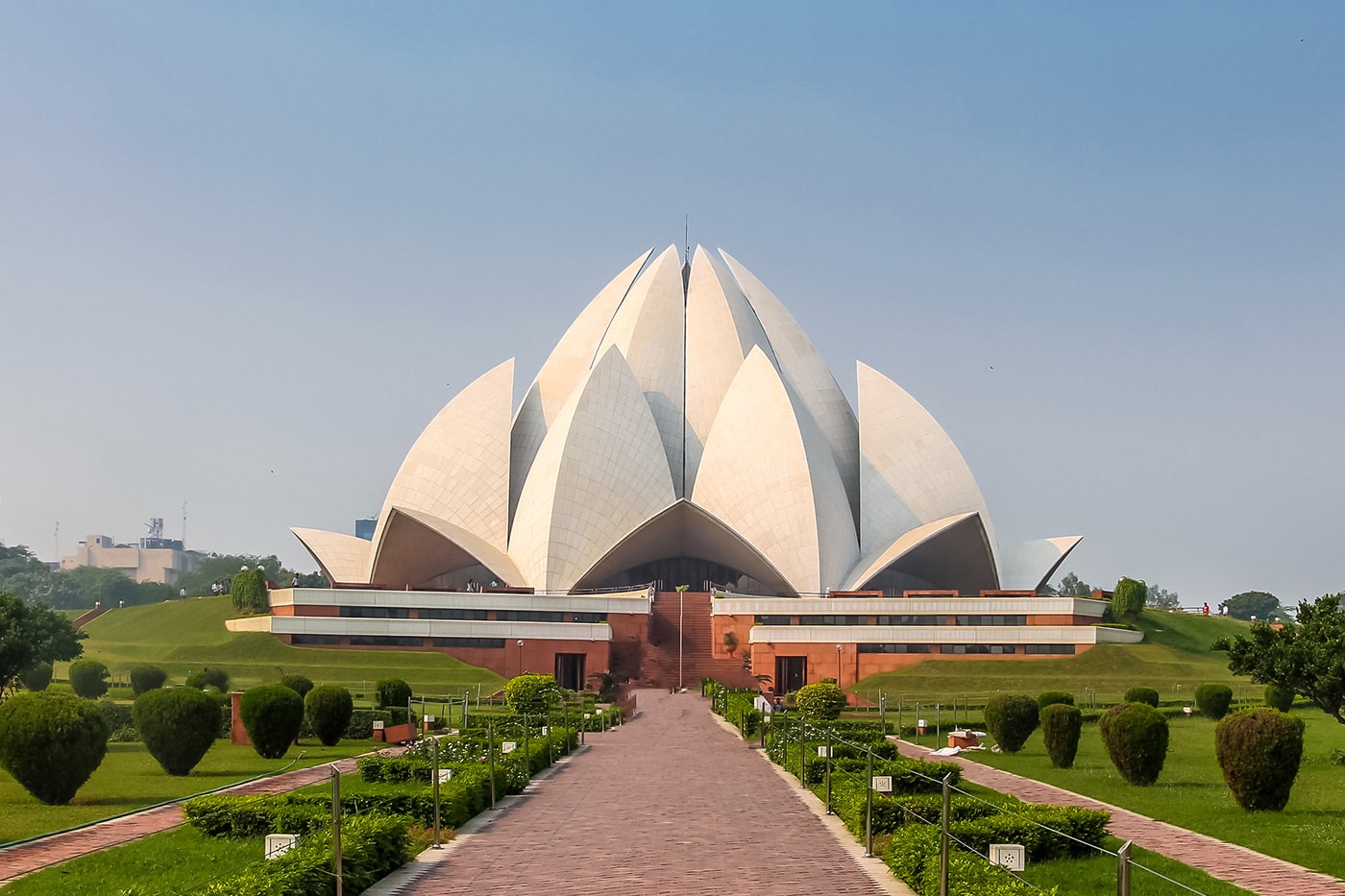
The design of the Delhi building, created by an Iranian architect, consists of 27 petals in white marble brought from Greece, and 9 access doors. A very striking and interesting place, which is different from what we are used to seeing in India.
To start, you have a couple of tours to explore the capital, one of them takes you on a tour of a couple of hours and the other one, lasting 8 hours, allows you to see the most emblematic places in Delhi.
Then you have a tour that can take you to see the main temples and some interesting gardens.
Here are some tours to learn about the country’s history as well as museums and cultural sites:
And finally, we have put together a list of activities of all kinds to make your visit to Delhi complete:
There is a wide range of accommodation options in Delhi, but we still leave you with a selection made by us in the Paharganj neighborhood, where we usually stay every time we visit Delhi.
We have listed the accommodations by price range (from cheapest to most expensive), so you can choose the one that best suits your budget.
The New Mount Everest restaurant was one of the first we tried after hundreds of hours of flying, the perfect place for replenishing energy in one of its two dining rooms. The views are not spectacular, but it is good for soaking up the hustle and bustle of the area.
On the other hand, you will find restaurants in almost every corner of Delhi where you can try delicious Indian food. Feel free to try new things.
Delhi takes the cake for chaotic cities in India. Getting around this huge city means being patient and trying not to get carried away by the madness of traffic.
The metro can be one of the best ways to get around Delhi as you can access almost everything. Just be prepared to be packed.
If you decide to take a taxi or auto rickshaw, remember to agree on a price in advance to avoid problems later, although you can also use services such as Uber, which already have established and recommended prices.
Our recommendation is to avoid walking too much from one place to another, since the city is not very well prepared for it, although there are certain areas where it is ok to do so.
Click on the image and it will take you to a new Google Maps window with all the points of interest to travel around Delhi.